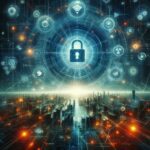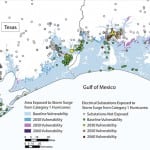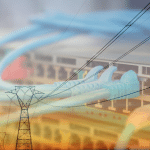Beyond major reliability events that have prompted regional blackouts in the past, the U.S. grid faces “imminent danger from cyber attacks,” warns the second installation of the Obama administration’s Quadrennial Energy Review (QER). Here are other key trends outlined in the comprehensive study of the nation’s electricity system.
The QER, available on the DOE web site, identifies the threats, risks, and opportunities for U.S. energy and climate security, with the goal of enabling the federal government to translate policy goals into a set of integrated actions.
Following a Jan. 9, 2014, directive from President Obama as part of his Climate Action Plan, the DOE released the first installment of the QER on April 21, 2015. That installment examines how the nation should modernize the U.S. grid and other energy infrastructure—the networks of pipelines, wires, storage, waterways, railroads, and other facilities—to promote economic competitiveness, energy security and environmental responsibility.
The second installment (QER 1.2) released on January 6 focuses specifically on the electricity system—from generation to end use—and its role in what it deems three key national goals: improving the economy, protecting the environment, and increasing national security. It also identifies trends and issues confronting the nation’s power sector through 2040.
The nation’s critical infrastructures that support the American economy and society are electricity dependent, and the electricity sector functions as an economic engine for the U.S., the study notes. Among key trends that will shape the future of the power sector are:
- An Increasing Importance of “Internet of Things” (IoT) and Digitization. The rapid growth of IoT is both a “manifestation and key enabler of this major change in the economy,” QER 1.2 says.
- The Changing Generation Mix. The U.S. power mix has realigned over the past few decades as low gas prices have led to substantial switches from coal to gas. Meanwhile, the generation fleet is transitioning from one dominated by “centralized centralized generators with high inertia and dispatchability to one that is more ‘hybridized,’ relying on a mixture of traditional, centralized generation, and variable utility-scale and distributed renewable generation.”
- Low Load Growth. U.S. electric consumption has dwindled since the 1950s owing to moderating population growth, improvements in energy efficiency of buildings and industry, market saturation of major appliances, and a shift toward less energy-intensive industry. This trend is expected to continue through 2040.
- Increasing Vulnerabilities to Severe Weather/Climate Change. Increased severity of extreme weather events over time has principally contributed to the frequency and duration of U.S. power outages between 2000 and 2012. Weather-related threats to the system are projected to worsen due to climate change.
- Proliferation of New Technologies, Services, and Market Entrants. The integration of variable renewables increases the need for system flexibility as the grid transitions from controllable generation and variable load to more variable generation and the need and potential for controllable load. A number of flexibility options exist, such as demand response, fast ramping natural gas generation, and storage. Meanwhile, a commonly used metric for measuring grid resilience does not exist, though several have been proposed.
- Emerging Cyber/Physical Threats. Rapidly evolving cyber threats and vulnerabilities are juxtaposed against “slower-moving deployment of defense measures,” the review says. “Mitigation and response to cyber threats are hampered by inadequate information-sharing processes between government and industry, the lack of security-specific technological and workforce resources, and challenges associated with multi-jurisdictional threats and consequences. System planning must evolve to meet the need for rapid response to system disturbances.”
- An Aging Workforce. More than 1.9 million people are employed in jobs related to power generation and fuels, while 2.2 million people work in industries directly or partially related to energy efficiency. A dip in power-sector workforce programs in the 1980s contributed to a shortage of middle and upper management positions in the sector today, a workforce gap that will widen has more baby boomers retire. At the same time, “The electricity industry will need a cross-disciplinary power grid workforce that can comprehend, design, and manage cyber-physical systems; the industry will increasingly require a workforce adept in risk assessment, behavioral science, and familiarity with cyber hygiene.” On a brighter note, between 1995 and 2013, the number of injuries per 100 employee-years in the electric utility industry decreased from 4.7 to 1.3. Line workers continue to experience hazardous working conditions, however.
- A Growing Interdependence of Regulatory Jurisdictions. While many electricity system models exist for the U.S., detailed modeling tools to explore the economic, social, and/or reliability impacts of electricity trade across all North America are “currently insufficient to inform opportunities for enhancing integration.”
The QER 1.2 offers a number of recommendations:
- Protect the Electricity System as a National Security Asset. “Widespread disruption of electric service because of a transmission failure initiated by a cyber attack at various points of entry could undermine U.S. lifeline networks, critical defense infrastructure, and much of the economy; it could also endanger the health and safety of millions of citizens,” it notes. It calls for Congress to amend the Federal Power Act to reflect the grid’s importance to national security. It also calls for more data on grid security and resilience.
- Address Challenges to Large-Scale, Centralized Clean Generation. Nuclear power, hydropower, wind, solar, geothermal, and biomass technologies face a range of siting constraints, licensing and permitting processes, or environmental concerns, which can be broad and extensive and make new large-scale deployments difficult, in some cases taking a decade or more to build. “A combination of federal coordination, licensing support, analysis of financing opportunities, and [research, development, and demonstration] can help address these barriers,” it says. Measures could include an increase in funding for the life-extension research and development program to ensure maximum benefits from existing nuclear generation; increasing support for advanced nuclear technology licensing at the Nuclear Regulatory Commission; and developing environmental mitigation technologies for hydropower. It also calls for federal tax incentives for nuclear generation, carbon capture and storage, and increasing power purchasing authorities for the federal government from 10 to 20 years.
- Address Significant Energy-Water Nexus Issues Affecting—and Affected by—the Electricity Sector. Two-thirds of total U.S. electricity generation—including many coal, natural gas, nuclear, concentrated solar power, and geothermal plants—requires water for cooling. In addition, carbon capture, utilization, and storage technologies have significant water demands, the review notes. Improved policy integration, data collection, modeling, analysis, research and development, and engagement with stakeholders could help address vulnerabilities posed by the joint reliance of electricity and water systems can create vulnerabilities (and create opportunities for each system to benefit from well-designed integration).
- Increase Financing Options for Grid Modernization. Estimates of total investment requirements necessary for grid modernization range from a low of about $350 billion to a high of about $500 billion. Incentives should include a DOE loan guarantee program expansion.
- Increase Technology Demonstrations and Utility/Investor Confidence. Demonstrating the technical readiness and economic viability of advanced technologies—which are often capital intensive—is needed to inspire the confidence of utilities and investors.
- Build Capacity at the Federal, State, and Local Levels. The QER 1.2 suggests ramping up federal support to states and small utilities to enable better management of complexities in the power system, such as integrating variable energy resources; incorporating energy efficiency, demand response, and storage into planning; developing competencies in various technologies; and making investment and security decisions within “uncertain parameters.” It also calls on the DOE to provide funding to state public utility commissions to allow them to hire new or train existing analysts “with more sophisticated and advanced skills and build institutional knowledge.” Finally, it calls on the DOE to establish a center for advanced electric power system economics.
- Inform Electricity System Governance in a Rapidly Changing Environment. The QER 1.2 calls on the DOE to collaborate with the National Association of Regulatory Utility Commissioners to convene a federal advisory committee that would report concerns and issues with harmonizing wholesale and retail rates and tariffs to the energy secretary.
—Sonal Patel, associate editor (@POWERmagazine, @sonalcpatel)










